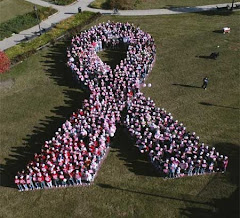I had a PET/CT in early June to answer a number of questions. The outcome was mixed: 1. Did the radiation I had last winter on the hilar tumor (the super dangerous spot) in my right lung work? Answer: From what we can tell, yes. Yeah! 2. Did the cryoablation I had last winter on the kidney tumor work? Answer: From what we can tell, yes. Yeah! 3. How fast are the five or six tumors in my lower right lung that have not yet been treated growing? Let me pause for a moment to admit that this is the first time I'm mentioning this. I didn't mention it in the Wrecking Ball post of February 25th because it just seemed too overwhelming. There's only so much bad news a person can take, and problems 1. and 2. were more urgent than problem 3. We didn't rush to treat these spots because they were relatively small, and we wanted to give me a chance to recover from this last year of treatments (surgery, radiation and ablations). So, what's the status of these spots? Answer: Gone! What? Yep, they apparently were either a slight infection or inflammation or both. That's the confusing thing about PET/CTs. They show anything that "lights up" from the nuclear injection, which can be cancer, infection or inflammation.
So far, so great! I couldn't believe that the planets were aligning. Well, some were and some weren't. PET/CTs don't pick up everything, especially if spots are small, and the last question was a big one. 4. Is there anything new? Answer: Yes. There are several tumors (at least six) in the lining of my lungs, called the pleura, that were too small to declare as cancer with the last set of scans in December, and some that are being seen for the first time.
Given the history of this game of Whac-A-Mole that I've been playing since the lung tumors first showed up in 2006, my doctors believe that there are more tumors in between those picked up on the scans. I'm forced to admit that this logic makes sense when I think about what happened with the lung surgery I had last August. My surgeon planned to remove two tumors that we could see on the scans. When he went in, he found eight more that we didn't know about. Instead of removing two tumors, he removed ten. And yes, I failed to mention that before now too. It just seemed, when I said it out loud, that people would think that I was one step away from hospice, and I knew I had a lot more Whac-A-Mole left to play.
However, the game is getting faster. Over the last month or so, I've been feeling pressure in one spot in my chest over my heart. The pressure turned to soreness and then increasing pain. It turns out that I have a tumor in my first rib. When the game itself moves, it's harder to keep up.
What's the plan? Well, I'll be using two mallets to keep whacking at the moles over the next couple of months. The rib tumor is best treated with radiation, while the pleural tumors in my lungs are best treated with radiofrequency ablation (RFA). After two trips to Johns Hopkins and several discussions with my doctors here and there, the plan is for me to start radiation to the rib on July 12th for 5-7 treatments (business days) and to have an ablation (a same day procedure) on one of the biggest lung tumors on July 17th. Once I get through that, we'll figure out the other ablations that we think need to be done now (not all of the six we know about are big enough yet to ablate). I'm hoping that Hope Lodge will have room for me again, where I can work remotely while getting these treatments. The side effects will be almost none. I'll be very tired a couple of weeks after the radiation, but the pain in my chest will be gone and my seat belt will no longer be uncomfortable. The RFA will only slow me down for a couple of days. I might get a temporary cough later, but it's a small price to pay for killing a lung tumor.
That's the short term plan: Keep playing Whac-A-Mole. The long term outcome may appear grim, but maybe not. A few years ago a Swedish study (we'll get to the Swedes later) found a gene fusion that was determined to cause ACC. It involves the MYB oncogene that was found to be altered in most ACC patients. Knowing what causes ACC allows researchers to try to target ways to "turn off" that gene so that tumors stop growing and new ones can't develop. The Adenoid Cystic Carcinoma Research Foundation describes several clinical trials that are testing new drugs to do just that. Since ACC doesn't respond to chemotherapy, these "targeted agents" are the best shot at controlling this cancer systemically, instead of wearing patients down with the never ending Whac-A-Mole game.
My long term plan is to stay ahead of the game long enough for something to come down the pipeline that turns off the MYB gene alteration. The clinical trials going on now are still too dangerous for someone like me (a transplant patient) and the side effects are very toxic. Thankfully, the doctors at Hopkins understand all this and are willing to keep treating me, one tumor at a time. Given that this is my third recurrence in a year and that my total tumor count is 25+ in my lungs, one in my kidney and now one in my bones, most doctors would give up on me. Most employers would too, for that matter. But my doctors and my firm are amazing and they have seen for themselves that I'm pretty lucky with Whac-A-Mole. It has nothing to do with skill. It's all timing.
Kathy
CANcer + HEALth = CAN HEAL

.bmp)